What Are Trichomes And Their Importance

- 1. What are trichomes?
- 2. What’s inside of trichomes?
- 2. a. Terpenes
- 2. b. Flavonoids
- 2. c. Cannabinoids
- 3. Different types of trichomes
- 3. a. Bulbous trichomes
- 3. b. Capitate sessile trichomes
- 3. c. Capitate-stalked trichomes
- 4. Different colors of trichomes and what they mean
- 4. a. Clear trichomes
- 4. b. Cloudy trichomes
- 4. c. Amber trichomes
- 5. The importance of trichomes
- 6. How to boost trichome and terpene production in your cannabis crop
- 7. Harvesting trichomes for extracts and concentrates
- 8. In conclusion
Everyone who grows cannabis seeds eventually comes around to learning about the anatomy of the plant, especially about trichomes. These small glands present in cannabis are responsible for not only getting you high but also for the characteristics of each strain.
1. What are Trichomes?
Trichomes are the sticky part of the plant, they are mushroom-looking glands that produce and store all the compounds that get us high. These glands have a width that ranges from 10 to 100 nanometers of width and are the reason for the shiny and frosty appearance of the buds. Trichomes begin to appear on cannabis as soon as the plants enter the flowering stage, they continue to appear toward the end of the lifecycle and are on their peak potency just as the plant is ready to be harvested.
As the plant’s buds begin to develop, trichomes also start to form along the stalk, the leaves, and the buds. Growers need to be careful when handling their plants during the flowering stage, as trichomes are volatile and can be degraded by physical contact, as well as heat, light, and oxygen.
2. What’s inside of trichomes?
Trichomes not only produce but store cannabinoids, flavonoids, and terpenes. Because of this, when trichomes break they release the sticky oil inside. This is what gives buds their stickiness and is what we extract when making hashish, for example.
Terpenes
Terpenes are responsible for giving flowers their flavor and aromatic diversity, terpenes have shown to work with cannabinoids to enhance their natural properties. Like cannabinoids, terpenes interact with receptors to provide a variety of effects.
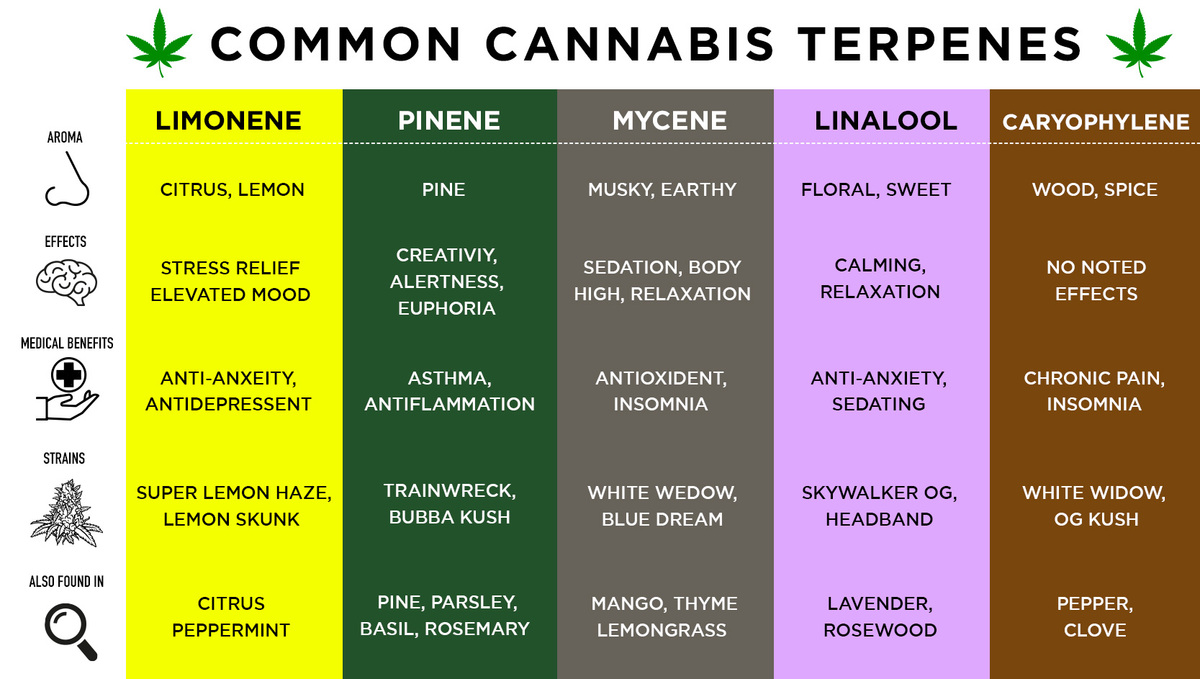
Flavonoids
Flavonoids are phytonutrients that contribute to the plant’s color, taste, and smell. Cannaflavins (flavonoids unique to cannabis) work together with the other compounds to provide a wide variety of health benefits. Along with terpenes, it has anti-inflammatory properties, for example.
Cannabinoids
Cannabis contains more than 100 cannabinoids, including THC and CBD. These cannabinoids interact with your body’s endocannabinoid system, along with terpenes and flavonoids they are what provide cannabis effects.
3. Different Types of Trichomes
Trichomes can be found in many species of plants throughout nature, they can take different forms and purposes. In cannabis they can be found in three different varieties:
Bulbous Trichomes
Bulbous trichomes are the smallest of the three types and can only be seen with the aid of a magnifying glass. They are the smallest and less abundant on cannabis, usually, measure about 10-15 nanometers, even though they contain cannabinoids, terpenes, and flavonoids, their small size limits their capacity.
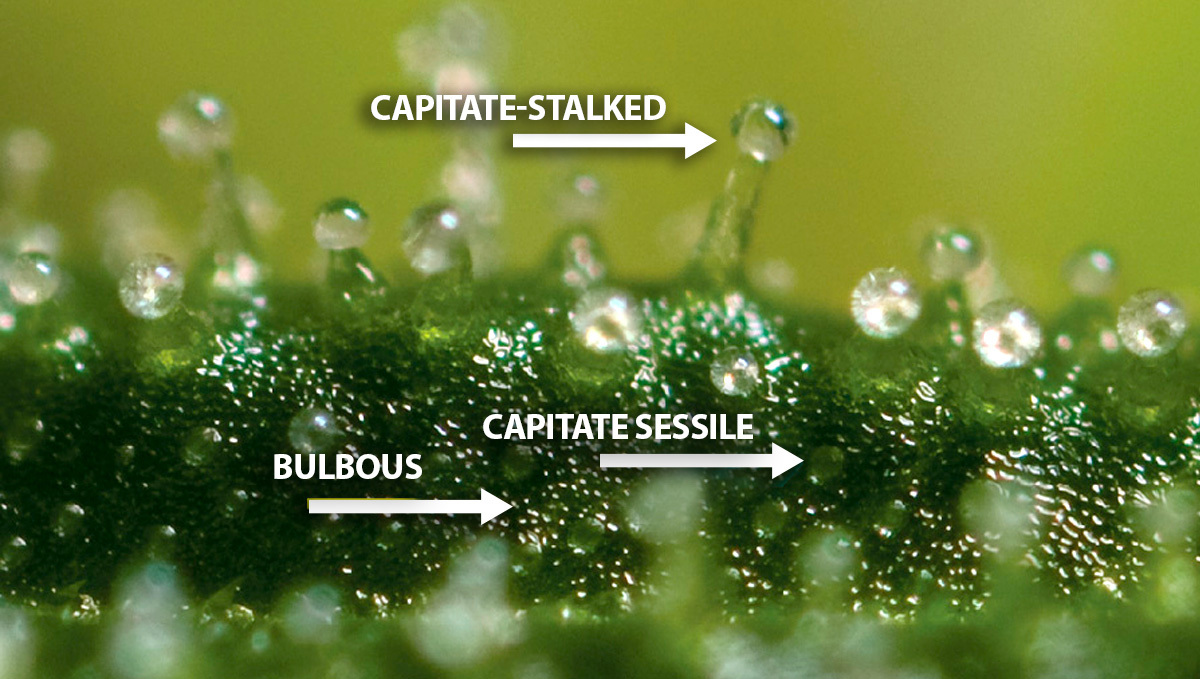
Capitate Sessile Trichomes
Capitate Sessile trichomes are the second largest of the three and are more abundant on the plant. These types of trichomes are the ones that most closely resemble a mushroom with a wide head and a short body or “stalk”, they range from 25-95 nanometers.
Capitate-stalked Trichomes
Capitate-stalked can range from 50 -100 nanometers and are the largest variety of glands. They’re the ones you’ll likely notice when looking at your flowers, they have a relatively large round head and a long stalk. This is the type of trichome that has the most compounds stored inside due to its size.
4. Different Colors of Trichomes and What They Mean
Just like the cannabis flowers ripen and mature, trichomes do too. They go from a clear, then cloudy, ultimately turning amber. By the color of trichome, we can see if cannabinoids are oxidating and this way we can know what kind of effect to expect from our flowers.
Clear Trichomes
Clear trichomes mean cannabinoids and the other compounds haven’t started oxidating yet and are relatively newly grown. At this moment, THC and terpenes production is at its peak, while CBD levels are still low. This means harvesting at this color will have a more cerebral psychoactive effect.
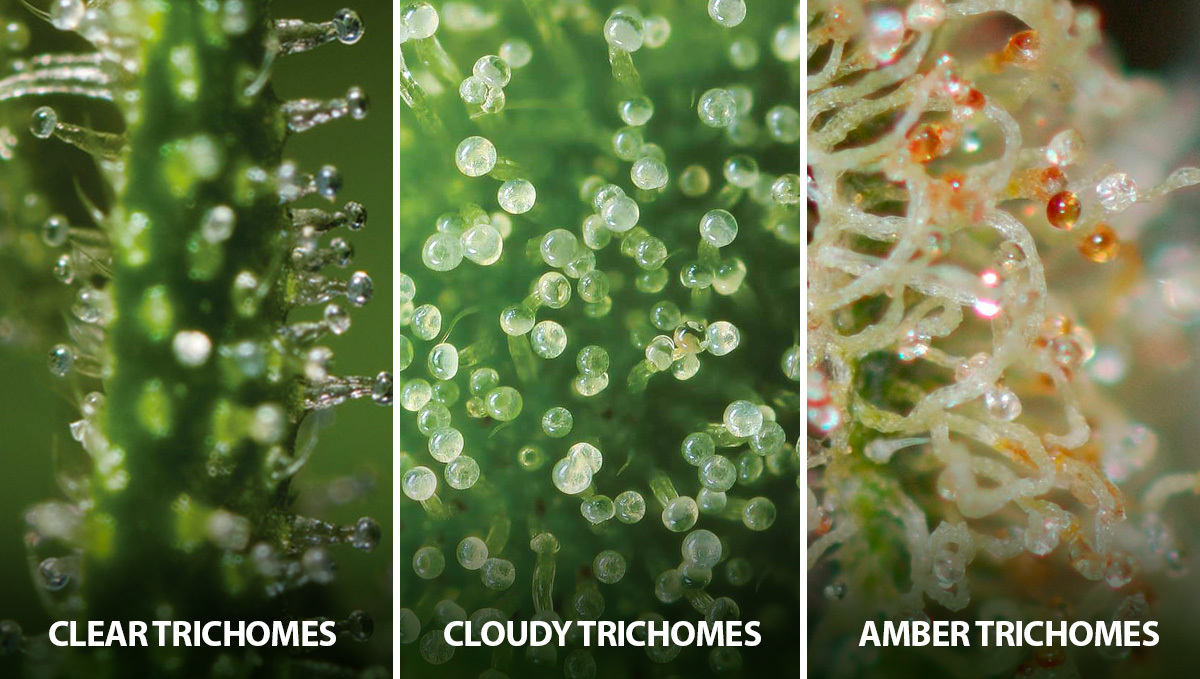
If you seek that rushy head high associated with Sativa strains you can experiment with our Mexican Airlines Auto. Harvesting her at this stage will definitely exacerbate her Sativa effects and as soon as you consume it you'll feel the psychoactive cerebral rush, perfect for a busy day. Be careful when harvesting at this stage! THC needs to mature before it can give its desired effects, so we recommend waiting until at least 50% of trichomes hit the next stage to harvest.
Cloudy Trichomes
Cloudy trichomes mean a small percentage of THC has turned to CBD and you’ll get the classic weed high that you’re looking for. The effect will be both a head high (euphoric and mood-enhancing) and a body high (pain-relieving and stress-reducing). This is when most growers harvest their flowers and it is generally considered the right time to harvest. You can also use the pistils as an indicator when more than 50% of the hairs have turned orange it means you’re at this stage.
If you want a more balanced high we recommend harvesting at this stage. The cloudy trichomes will deliver a pleasant head high that will gradually become a relaxing body high, perfect for combating stress and chronic pain altogether. If you're seeking this kind of effect we suggest experimenting with our Z Auto.
Amber Trichomes
If you’re looking for a more Indica effect (relaxing, couch-lock, sleep aid type of high) you can leave your buds to mature a bit more. At this stage, most of the THC has converted to CBD and will produce far more of a body-high than a head-high. This is usually for growers who are growing medicinal flowers and can be ideal for people looking for pain-relieving flowers or to treat insomnia, also for recreational users that want to reduce some of the more powerful psychoactive effects that harvesting early can provide. For people who don't like a cerebral high in any way and are looking for a more Indica type of high to help you sleep or to reduce pain, we recommend experimenting with our Gelato Auto.
Harvesting at this stage will give you a full-body high with a slight mood-enhancing effect.
5. The Importance of Trichomes
Trichomes offer multiple benefits to the cannabis plant. Cannabis produces trichomes as a defense mechanism, these glands serve as a barricade against pests because of their bitter taste and strong smell. They also serve as a sunblocker to avoid harmful UV rays to reach the plant tissue and avoid burning. To us consumers, they’re the main reason why we consume and grow cannabis. Trichomes are the part of the plant that produces and stores terpenes, cannabinoids, and flavonoids. These compounds are responsible for, not only getting us high, but also for giving the unique aroma, flavor, color, and type of high to the wide variety of different strains.
6. How to Boost Trichome and Terpene Production in Your Cannabis Crop
There are multiple techniques that cannabis cultivators use to try and maximize trichome production in their crops, ranging from simple choices before the crop is germinated, to complicated methods that are seen as closely guarded secrets. Let's run through a few of the more common ways to ensure you get the frostiest, stickiest, dankest yield possible.
It All Starts with Seed Selection
The genetics of a cannabis plant is the biggest influence on how it will grow and what kind of yield it will produce. When choosing seeds, make sure to do your research and find varieties that are known for producing high levels of trichomes and terpenes. It's also good to consider the cannabinoid profile that a particular strain, and if that profile is the outcome you are looking for.
The Growing Environment Plays a Huge Role in Trichome Production
Providing the right environment for your cannabis plants is critical to maximizing trichome and terpene production. Temperature, humidity, light, and nutrients all play a role in how well your plants will develop. For example, if the temperature is too high, it can lead to lower trichome production. Conversely, if the temperature is too low, it can damage the trichomes and terpenes that have already formed. This is again cultivar specific, with certain strains preferring a slightly warmer and wetter environment, while others will flourish in slightly cooler climatic regions.
The Style of Cultivation Can Affect Trichome Production
As a general rule, indoor crops will produce more trichomes than those grown under the sun. Why? It simple. When you grow indoors, you are able to dial in the environmental conditions to a much more specific level than if you grow outdoors. Now, this is of course a huge generalization - sun-grown cannabis can be top-shelf, stick as all hell, gorgeousness - but there are a lot more factors at play for outdoor growers.
One of the best ways to boost trichome and terpene production in your cannabis crop is by using hydroponics. Hydroponics is a method of growing plants without soil, using only water and nutrients. This cultivation method can provide your plants with a constant supply of oxygen, water, and nutrients, leading to bigger, healthier plants with higher trichome production.
Pesticides and Herbicides can Have a Negative Effect on Trichome Production
It is important to note that pesticides and herbicides can have a negative effect on trichome production. Many of these products are designed to kill or damage the trichomes of plants, so it is important to only use them when absolutely necessary. If you do need to use them, make sure to choose products that are specifically designed for cannabis plants and follow the directions carefully.
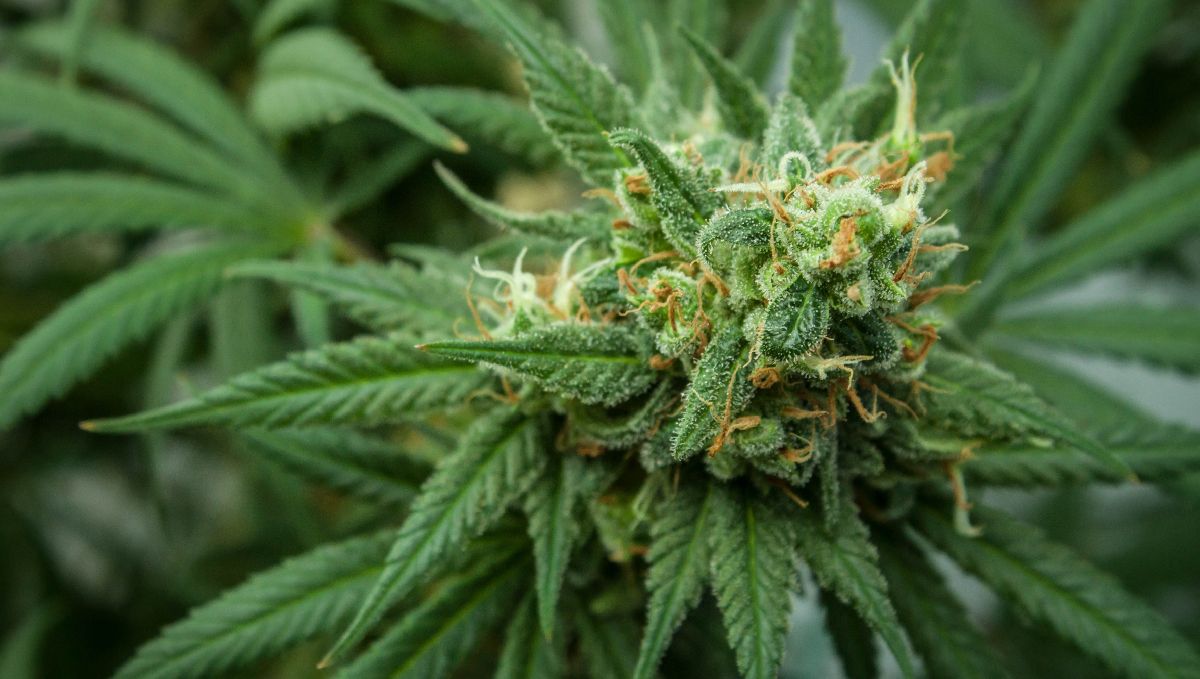
Always choose organic options over synthetic pesticides if at all possible, and try to keep from spraying anything on buds that have begun trichome production if at all possible.
Top-Class Nutrients are Critical for Trichome Production
Nutrients play a vital role in trichome production. Cannabis plants need a wide range of minerals and nutrients to grow and thrive, and these needs change throughout the different stages of the plant’s life cycle. If you are growing a soil medium then this is less important, as you should have buffered the soil to provide all the necessary nutrients - but you may still need to use some additives or boosters to help squeeze out as much frosty goodness as the plants can manage.
Make sure to use a high-quality nutrient solution that is designed specifically for cannabis plants, and in most cases, we recommend halving the dose specified on the bottle. As your plants begin to flower, you will want to use a bloom or flowering nutrient solution. These solutions contain higher levels of phosphorus and potassium, two of the most important nutrients for trichome production.
7. Harvesting Trichomes for Extracts and Concentrates
In recent years we have seen a huge explosion in the world of cannabis concentrates and extracts. With benefits for both recreational and medicinal cannabis users, these exceptional products are now a market mainstay. Concentrates and extracts are made from just the trichomes and no other part of the plant, and while there are many different ways to produce extracts, these all fall into just two primary categories of trichome extraction. Mechanical separation, also known as physical separation, is the process of physically breaking the trichomes and removing them from the plant.
This can be done in a couple of different ways, but the most common actions are by shaking them free or using heat and pressure to dissolve the trichomes for separation. With “ice-water hash” or “bubble hash” you plunge your flowers into ice-cold water which freezes the trichomes. The flowers are then placed into filter bags that incorporate micron mesh filters. The bags are then shaken which causes the frozen trichomes to break free from the buds are fall through the micron mesh filter for easy collection.
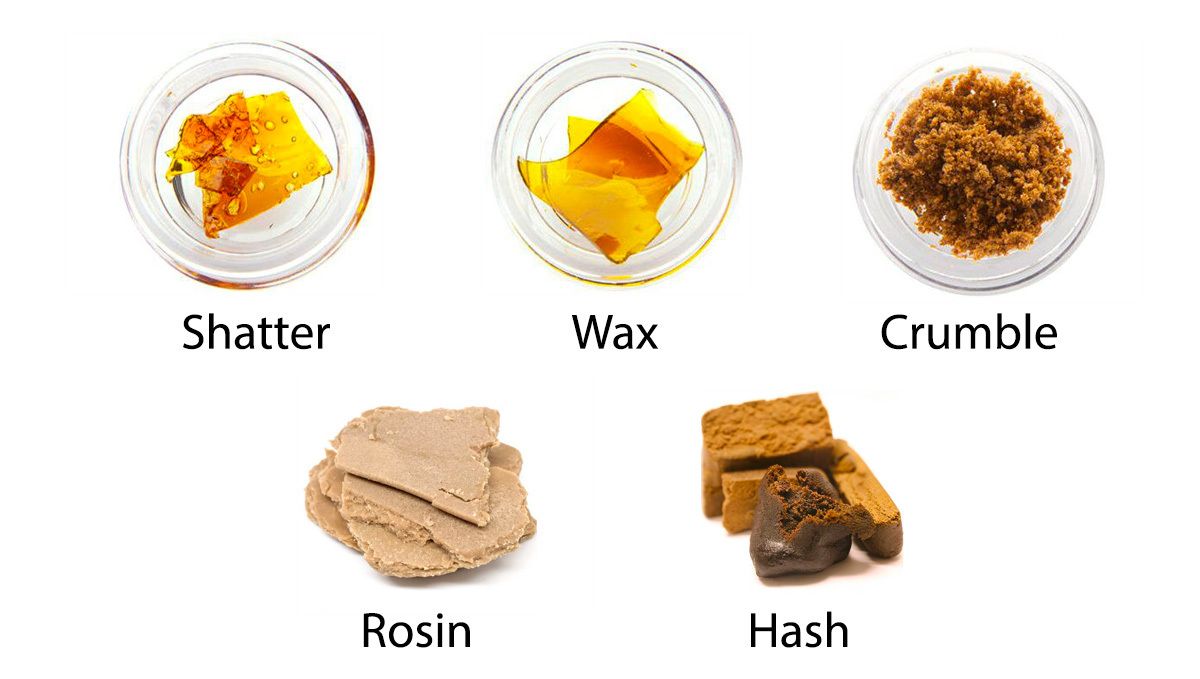
Rosin is another form of mechanical separation. This type of extract combines heat and pressure and results in a waxy, sticky almost caramel-like paste that contains up to 80% THC. Buds are placed into a specialized Rosin press, which heats to a certain temperature to melt the trichomes, and then this melted substance is pressed out of the bud itself. You can use a trusty old hair straightener to make rosin hash, but the result will not be as high quality as when real rosin pressed is used.
Chemical extraction employs the use of a chemical solvent to strip the plant of its trichomes. Solvent-based extraction is much more efficient than mechanical separation methods and is also usually a quicker, easier method that captures the full spectrum of cannabinoids contained in the flowers. For these reasons solvent-based extraction methods are preferred by most commercial extract producers, but they do come with some slight downsides. The cons of chemical extraction include the high risks involved, as most of the solvents used are highly flammable. It also destroys the plant material itself which, in turn, can eliminate the cannabinoids and chlorophyll. It can also require some extra processing to be safe for consumption.
Common forms of chemical extraction are Butane Honey Oil (BHO), C02 Oil Extraction, and Ethanol Extraction. BHO is made by dousing the buds with butane, which totally strips the trichomes from the plant material. This is then passed through a micron mesh filter which captures any and all plant material, allowing only the butane and trichomes to pass through. This is then left in a cool, dry, dark place to allow the butane to fully evaporate. A vacuum oven can also be used to speed up the evaporation process. While this is an extremely dangerous method to try at home due to the flammability of the butane, there are commercial closed-loop systems that minimize this risk and make the entire process much safer.
8. In Conclusion
Crystals, frost, sugar... It doesn’t matter what you call it, trichomes are why we love cannabis and the reason why we grow it. Remember, trichomes are what give the enormous variety of strains its characteristics and it’s the single most important part of the cannabis plant.















Comments